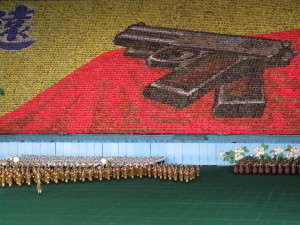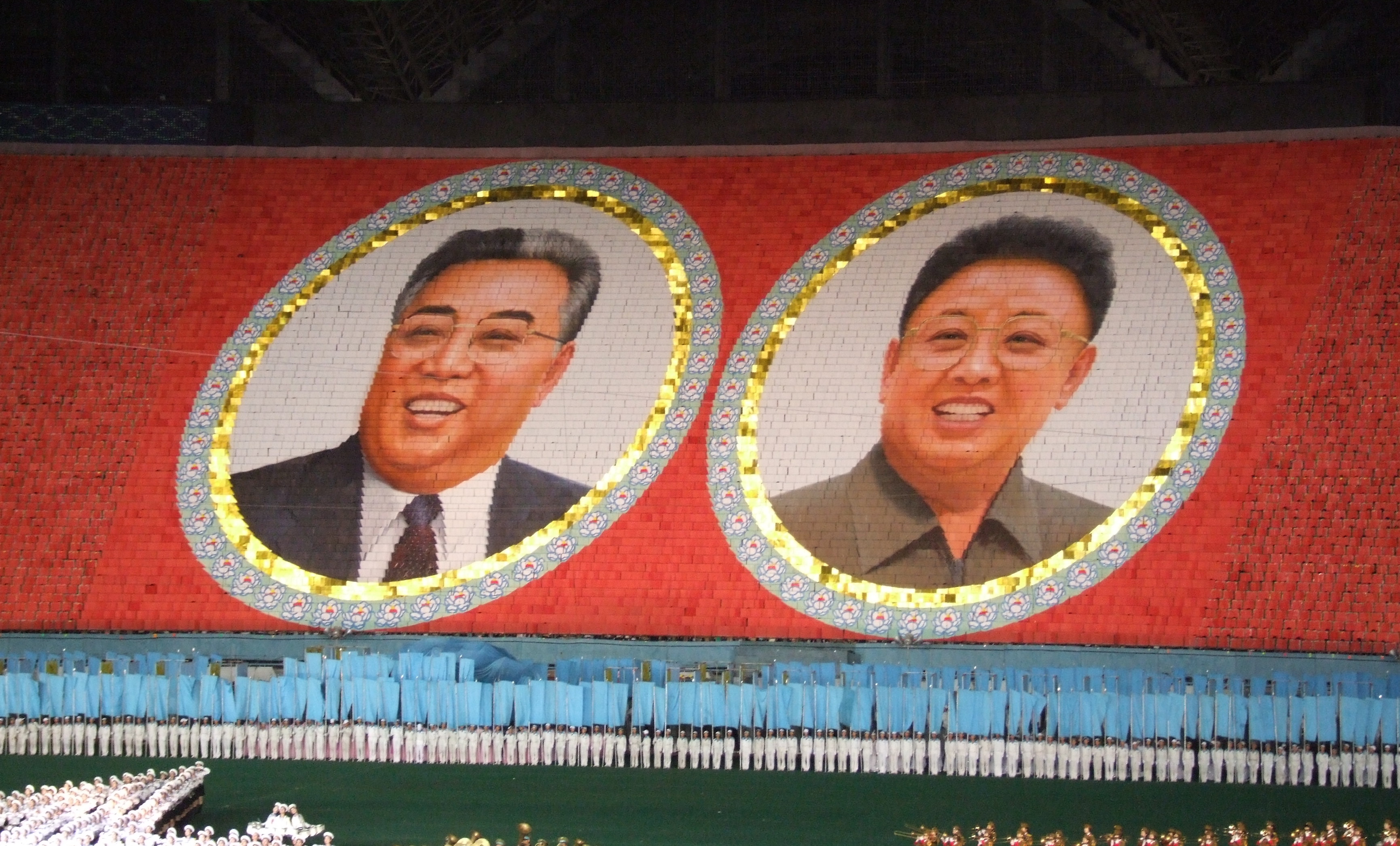ABC’s Bob Woodruff is one of the few American journalists who has been allowed inside North Korean borders. He has been to the country a total of five times, most recently in 2013 to report on national celebrations of the sixtieth anniversary of the end of the Korean War. In an interview with BPR, he described an experience he once had while attending an Arirang performance organized by the government. The show involved tens of thousands of people flipping large colored cards to create intricate designs in the stands. He described the performance as incredible. “I don’t know how many years they spend practicing it.” Along with the mass of card flippers, the performance involved beautiful dancers who played out historical scenes from the Korean War, including the tragedy that occurred when the country was split. The show was laced with political points, painting the war as cruel and terrible while garnering emotional appeal for the country’s ultimate goal: to rejoin with South Korea and become one united country again,
These types of performances, extravagant in their level of complexity and coordination, have become a pillar of North Korean culture and festivities. The Arirang games and celebrations on national holidays commemorate North Korean history and its leaders. Hundreds of thousands of performers participate in a strict selection process that lasts for months. Among those performances are the intricate images created with the cards holding clear political messages. One photo taken by photojournalist Jeremy Hunter depicts the performers creating two pistols handed down from Kim Il-Sung to former leader Kim Jong-Il. Another shows current leader Kim Jong-Un’s grandfather Kim Il-Sung. Even illustrations that initially seem neutral, like mountainous landscapes and depictions of the Pyongyang River, serve to bolster love for the leaders, as they are usually representative of scenes from famous fables surrounding the leaders’ ascents to power. Songs praising Generalissimo Kim Il-Sung’s military success against imperialist American troops and the Japanese usually accompany such performances. Hunter’s photographs documenting the performance art have been described as “the most important visual record of propaganda art of modern times.”
Such impressive displays asserting governmental dominance in societies who unconditionally love their leader serve the dual purpose of amusing the powerful elite, as well as any foreign guests they aim to impress, and asserting government power. In courtly Europe, for instance, monarchs enjoyed extravagant, elaborate masque performances, which served both to entertain the nobility and display their vast wealth, both to local nobility and foreign ambassadors. While the elaborate North Korean Arirang performances portray the strength of their government most candidly through blatantly positive depictions of government adoration, an unspoken yet equally powerful message is portrayed through the actual pageantry of such performances. Such elaborate choreography takes months and many skilled trained professionals to accomplish, as well as impressive organizational skills and acute attention to detail. Just as how European masques were performed in order to showcase decadence and wealth, North Korean Arirang showcases the strict control and power the government has over its people and military.
Performance art is not the only artistic medium used by the North Korean government to signify its all-encompassing power and control. In Pyongyang, art “propaganda squads” visit production sites to recite poetry, sing songs, and perform one-act plays in order to encourage workers and fill them with national pride. In an interview with BPR, Marsha Cooke, who was the Asia Bureau Chief for CBS News when she traveled inside North Korea’s borders in 2010 to report on the announcement of Kim Jong-Un’s ascent said that she noticed that the country’s art was one of its most ubiquitous example of the leader’s influence. It seemed that all of the fine art Cooke saw while there depicted or was somehow related to the cult of personality. “Nothing is subtle. All art is propaganda in North Korea. Everything from the murals in subway stations to the giant posters which line the streets of Pyongyang are used to constantly remind ordinary North Korean citizens that they are ruled by the Kim family, all of whom are like deities or gods.”
Leaders using art to display themselves as all-powerful is far from new. Most of the greatest early examples of famous, extravagant works of art served this purpose. After all, what were the Pyramids of Giza if not testaments to the immortal power of Egyptian pharaohs? Kings Louis XIII and XIV of France hired painters, architects and other types of artists in order to depict them in a way that would portray them to be equivalent with God and heaven. However, most famous works of art from the same time period depict subject material besides monarchs, much of it religious. In North Korea, a country where religious practices are largely discouraged, public adoration and loyalty is not split between leaders and God, but rather all concentrated towards the government.

Another important distinction that must be made regarding this type of in North Korea is the fact this is the only type of art to which the North Korean public is exposed. While many other national leaders put out art with strong messages, the potency of propaganda is amplified when it is the only art displayed to a people. Art is commonly understood to be an expressive medium, and one that has fueled revolutions and cultural movements. When art is only a microphone for the government’s agenda, it ceases to be a medium for true communication. In this way, people are stripped of a powerful means for expression. The unanimity of North Korean art creates a setting conducive to unified thought.
To Woodruff, it is unclear whether such filtered art and propaganda are successfully conveying their intended message. All of the North Korean citizens that he came across seemed to worship and revere their “Supreme Leader.” When Kim Jong-Il marched through Pyongyang in a parade, Woodruff noticed people flinging themselves to the ground and sobbing, seemingly overcome with intense adoration for their leaders, who were “literally treated like gods.” However, in a country under such rigorous control as North Korea, it is impossible to tell what is genuine and what is orchestrated, especially in front of American press. “We always wondered, do they really believe that dearly? Or are they under orders to act like that? Are they crying out of love or pain? We don’t know what to believe.”
